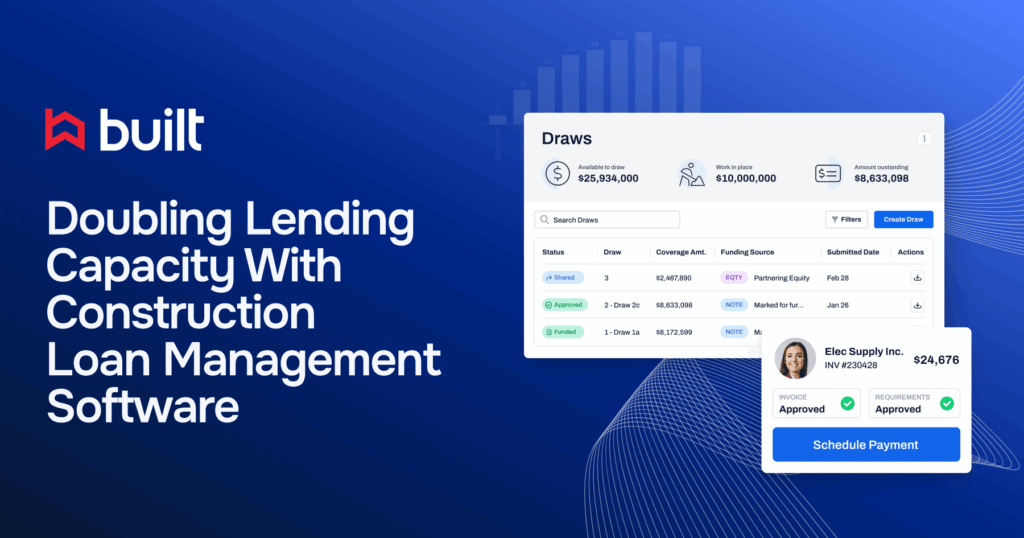
Conference Recap: CREFC New York 2023

From June 12-14 2023, Built attended the annual CRE Finance Council (CREFC) conference in New York City. As a result of what we learned, we’ve developed this takeaway guide to shed light on our recent engagements with CRE industry leaders.
The general CRE Outlook
The commercial real estate market is undergoing significant changes and facing various challenges. Many in the industry closely monitor legislative and regulatory updates, including delays in Basel III regulations and increased banking oversight. The evolution of the CMBS industry, specifically on upcoming maturities and the relevance of collateralized loan obligations, is a popular talking point. Investors are adapting their strategies to changing market conditions and seeking attractive returns. Overall, the CRE market remains dynamic, with opportunities and risks arising from these ongoing discussions and developments.
“While the current state of the CRE lending market faces evolving market dynamics from legislative changes, alternative lending, and interest rate uncertainty, capital is still available, and borrower demand for capital is stable. My outlook is that when the interest rate outlook becomes predictable, we will begin seeing an increase in CRE lending, focusing on limiting LTV with ancillary equity investments, such as C-Pace, and strategies to attract limited partners to increase preferred equity,” says Built subject matter expert John Ricciardi
Legislative & Regulatory Updates
The conference highlighted the importance of staying informed about regulation changes and their impact on the banking sector, capital markets, and reporting disclosures. Discussions revolved around the delay of Basel III “Endgame” regulation and its impact on banks and capital reserve requirements. Increased banking oversight and stricter capital reserve requirements due to the risks associated with commercial real estate. Changes in reporting disclosures, including a lower threshold for banks to submit capital deal data.
CMBS Industry Evolution
The development and evolution of the commercial mortgage-backed securities (CMBS) industry were discussed, along with the difficulties faced during the global financial crisis and the repercussions of the COVID-19 pandemic. The future of CMBS, the upcoming maturities of CMBS deals, and the relevance of collateralized loan obligations were also discussed.
Office Market Dynamics
On specific CRE asset classes, the evolving office market was a key topic, with discussions on the impact of remote work, the importance of office culture, and opportunities for recovery. Views varied on the future of office spaces, with considerations for government intervention, market conditions, and regional preferences. Panelists expressed pessimism about office loans due to increasing remote work adoption, leading to higher vacancy rates. Regarding its future, one thing is for certain; Regional preferences and market conditions influence the outlook for the office market.
Alternative Lending
The decline in issuance volume and the role of alternative lenders were prominent topics. Lending options in sectors such as lodging and multifamily were explored, along with strategies for attracting and maintaining capital. Creative financing solutions, including C-PACE financing, mezzanine debt, and preferred equity, were discussed as ways to address market challenges.
Government Regulations & Multifamily Properties
The impact of government regulations on multifamily properties, such as proposed SEC Rule 192 and rent and eviction moratoriums were explored. The Federal Reserve’s actions on interest rates have complicated underwriting and loan pricing. Valuations, supply, and market fundamentals in the multifamily sector were examined, as well as highlighting the effects of rising interest rates and narrowing capitalization rate spreads. Interest rate cap agreements have protected borrowers against rising interest rates, but replacement agreements have become costly, impacting loan extensions. Multifamily assets showed resilience, but rate hikes may impact affordability for borrowers.
John Ricciardi explains, “Regarding potential regulations and increased banking oversight, the private credit industry will be the biggest gainer in the market. Debt funds are raising capital to purchase CRE bank debt when Basel III regulations are in place.”
Investor Perspectives & Investment Strategies
Finally, investors’ perspectives in the CRE market were examined, with discussions on investment strategies, the evolving capital structure, and the search for attractive returns. Key considerations included the importance of CMBS as a source of liquidity, reassessing controlling class structures, and the need for stricter reporting standards.
Why Built attended
These events provide a unique opportunity to connect with key stakeholders in the commercial real estate finance space, including lenders, developers, investors, and industry experts. By actively participating in these gatherings, we aim to foster meaningful relationships, gain insights into market trends, and showcase our innovative solutions. Through events like CREFC, we demonstrate our commitment to driving digital transformation in the commercial real estate industry.
Interested in connecting with our team post-event? Schedule time by visiting getbuilt.com/demo-request/.
Related Posts


Beyond Inspections: Why Lenders Need Construction Loan Monitoring Software for Risk Management







